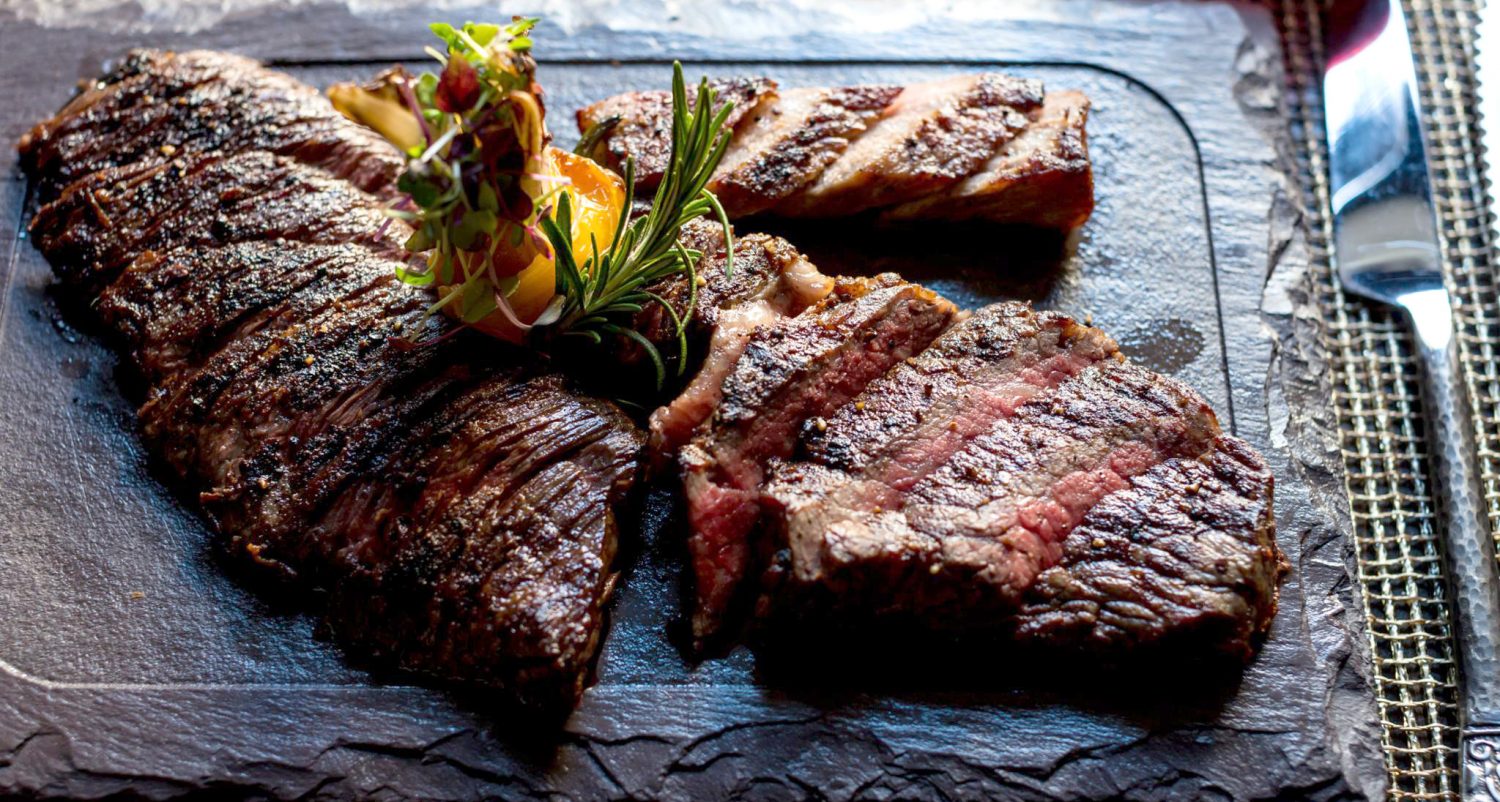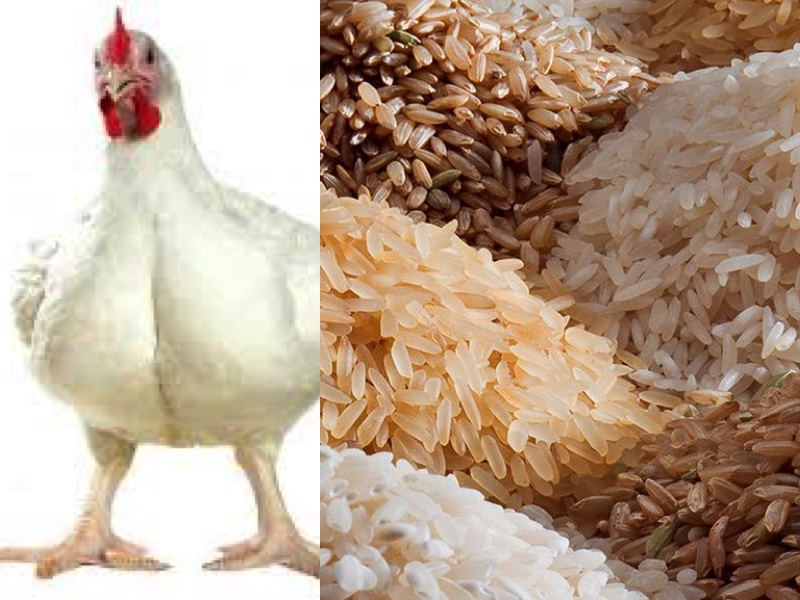
I thought I was going to put up a chicken and rice recipe that I did at home. But when I started thinking about it, I realized that these two ingredients have travelled the world together and should actually qualify as World Citizens.
What I mean by that is that there are versions of chicken and rice together from all over the world. The following is a list that comes to mind and by no means is this an exhaustive list.
- Arroz con Pollo – this aptly named dish literally “rice with chicken”has multiple variations. A lot of the Latin American versions are very similar but a few distinctive ones are
- The Cubano – One pot meal with Green Peas and Red bell peppers
- The Mexican version – the minimalist version
- Arroz con Pollo chapina from Guatemala where it is cooked with green peas and Olives and garnished with sliced hard boiled eggs
- Riz ala` dajaj – Lebanese or Middle Easters in Origin. Nuts, Spices and dried fruit can make an appearance is versions of these. In addition, ground lamb or sometimes beef is browned and then the rice is toasted from the fat exuded from the meats before cooking the rice to increase the depth of flavour of the rice
- Nohitlu Pilavi – Turkish, think Pilaf and you will realize where the word Pilaf came from. Rice Pilaf with Chicken and Chickpeas. Eat it piping hot with the ubiquitous Turkish Yogurt drink Ayran… (an aside here, ayran is close to the lassi from India… thinner in consistency. In fact it is very close to the south indian salty butter milk drink served on really hot muggy summer days)
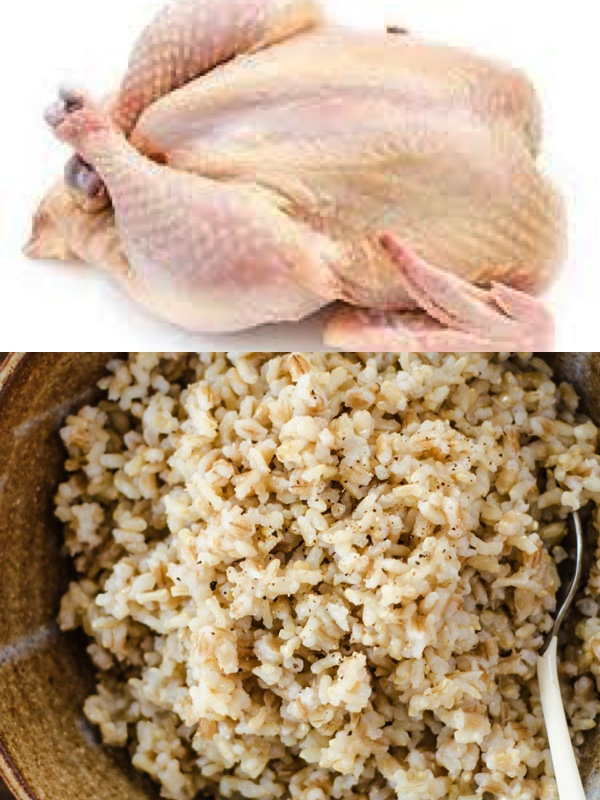
- Chicken and Orzo from Italy – Classic easy meal Italian style. I have even eaten it served with Acini de Pepe
- When you venture to the far east or south east Asia these two ingredients go together all the time no matter how they are prepared together or apart. Every chicken curry tends to show up with steamed rice on the side, be it from Sri Lanka, or any of the 20 different varieties originating from whichever state of India it is, or Thailand or Malaysia. There is one special one that I will give its own banner here
- Chicken Biriyani – Hails from the Southern Indian state of Andhra and comes closes to Arroz con Pollo, but for the fact it is drier than varieties of those. I may put up a recipe that I cook for Chicken Biriyani as a separate post. But this dish aromatic with heady smells of Cinnamon, Cardamom and fennel and assembled as layers of cooked rice, vegetables like petit pois and cut carrots, crispy fried onions and chicken. Think of lasagna to get the effect. One goes down vertically through the dish as it is served with the layers intact and pick up a bit of each layer in each mouthful.
- New Orleans with its fun mixture of Creole and the French has two variants on the chicken and rice theme
- Chicken jambalaya – while this has some smoky sausage to help it along , it really is a chicken dish with rice…
- Chicken Gumbo – Cooked with Okra and Gumbo filé (sassafras) but served with rice…
- Spanish Paella – While you can get Paella of every kind from Seafood to Paella Verdura you still got to love the fact that the most classic version of Paella you get has shrimp, sausages and you guessed it Chicken… with Bomba rice cooked with them flavoured with Saffron!!!
There is always the variants that creep up… Take turkish Nohitlu Pilavi, cut down on the rice, add more broth and flavour it with a bit more and make it into a soup. Once I made a Chicken and rice Soup with chick peas except it was flavoured with wild thyme, Sumac and toasted sesame seeds and the chicken was cooked with Zaater…. (future post)
Suffice it to say Chicken and Rice walk through the world hand in hand
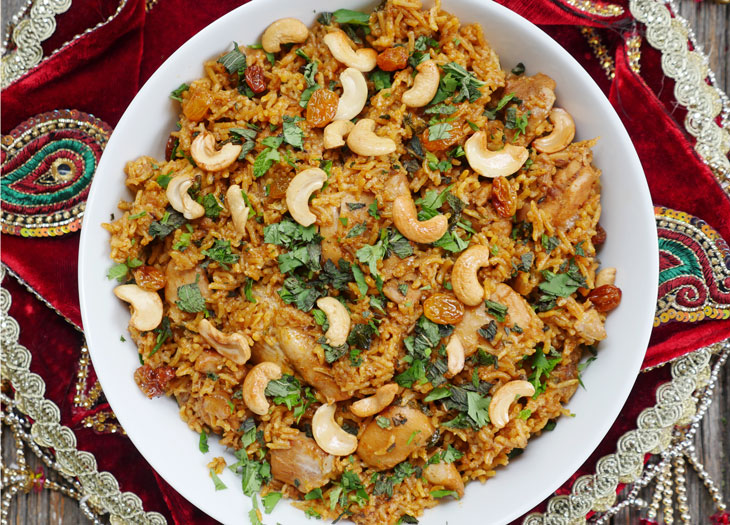
Broccoli and Cauliflower stems
Broccoli stems are the discards that should never be discarded. They have the same flavour profile of Broccoli but are milder in flavour than the florets. They also have the body to not go mushy when cooking. Spend some time peeling off the really tough bits of the skin at the bottom of the big stem; use a paring knife rather than a vegetable peeler. The stalks on the flo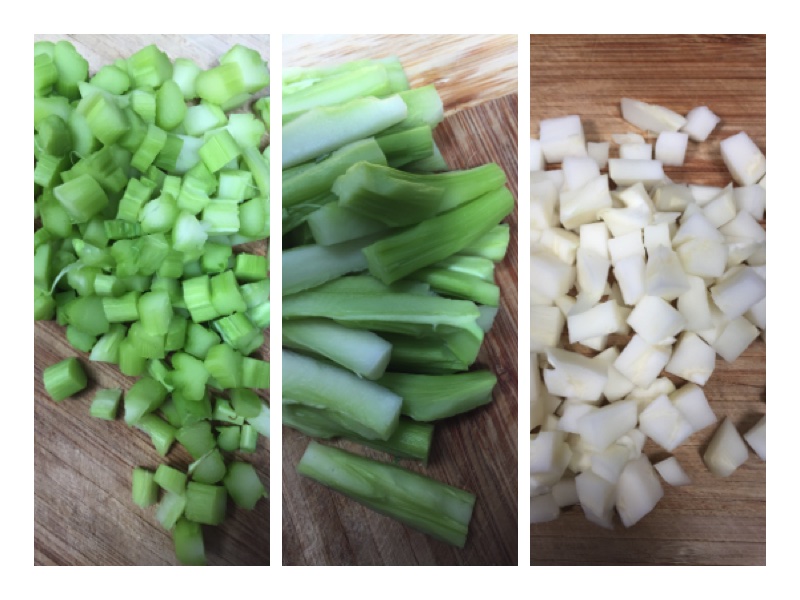 rets can also be peeled. Then the stems are just delicious is all sorts of dishes.
rets can also be peeled. Then the stems are just delicious is all sorts of dishes.
Let us first talk about the peels from Broccoli and Cauliflower stems. They have a very strong flavour if you add them to the scraps to make Vegetable broth described in a different post. However, I save them and make a stock out of them to cook other cruciferous vegetables in like Cabbage or Brussels sprouts.
The stems are absolutely delicious when chopped and added to Vegetable Frittata (fancy term for an omelette); add them to soups chopped up, or to stir frys. My favourite way is to add them to curries; they have enough body to not fall apart during the long cooking the curry has to have.
Eggs for Breakfast any one?
I am a Type 2 diabetic who has to worry about his blood glucose levels nearly all the time. This is especially hard on me since I LOVE good crusty bread. The other fact of life is that almost every standard breakfast item is a carb loaded things; cereal, toast, breakfast potatoes.
Eggs are fine but you end up having to cook them. The other thing about eggs is that unless you do something to them the standard egg preps tend to get bland. The biggest issue for me is that I don’t want to turn on the stove every morning to make something with eggs that would fulfill the low carb criterion.
I started doing this a week ago and this has worked out OK. Make little egg frittatas and store them in the fridge. They should be fine for a week (from the USDA). Add whatever bits needed to make them flavourful and your imagination is the limit on what you want to put in them. For this one I went with Spinach, Garlic and nutmeg.
Let me pontificate a bit here. The reason everybody reaches for the Cholula hot sauce or tabasco or Sriracha or whatever version of the sauce sitting on the table or even smother the version of egg you have in front of you with salt and pepper is the one glaring missing ingredient in the eggs that we as humans crave in almost all of our dishes, “ACID”. If we think about it almost all of our food is acidic in nature. So take care of that when making these eggs.
Ingredients:
- 4 large brown or 3 jumbo brown eggs (the fresher the better)
- 2 Tbsp half and half (milk is fine too, half and half is a little richer)
- Salt to taste
- Pepper. I love substituting regular black pepper with Aleppo pepper… Try it sometime, there is smoky sweetness to it that is just amazing. It is a bit like an Ancho without the harsh note associated with powdered Ancho chili.
- ½ packet of thawed frozen young spinach chopped up fairly fine
- ½ medium onion diced fine
- 2 cloves are Garlic smashed and chopped fine
- 1 Tbsp Red wine vinegar
Directions:
- Melt a pat of butter in a non stick skillet over medium heat with a dash of vegetable oil (the oil raises the smoke point of the mixture in the pan and will prevent the butter from burning)
- Saute the onions until they are translucent

- Add the garlic and after 45 seconds or so add the spinach to the pan and continue sauteing. Take care not to burn the garlic; burnt garlic is bitter!!!
- Season with salt and pepper and optionally add a couple of grates of nutmeg. Spinach loves nutmeg!
- Once the spinach is cooked through, add the vinegar and mix it well and take it off the heat and let it cook.
- Break the eggs into a non reactive bowl and whisk them with the half and half really well. As you whisk you will see the colour homogenizing and actually starting to lighten. Time to stop whi
 sking.
sking. - Season the eggs with salt and pepper (be generous with the pepper, it needs it) and scrape the cooked and cooled vegetables into the egg. Use a rubber spatula and get all of it including the liquid which has the acidity you are looking for. Mix well with the spatula.
- Pour the mixture into buttered or oiled (I use the vegetable spray) muffin p
 ans. Fill it about ¾ of the way
ans. Fill it about ¾ of the way - Bake about 10-15 minutes in a 350° F oven (just for fun, I believe it is Gas mark 4!!! 🤣 ) until a toothpick inserted comes out clean.
- Optionally top it with some cheese and continue for another 5 minutes to melt the cheese. If you do this fill it ⅔ of the way in the muffin pan rather than ¾.
- Cool, remove from the muffin pan and cool on cooling rack for another 15 minutes and store in the fridge.
- Microwave 30 seconds or so on high to eat when you pull it out of a fridge.
 Sky is the limit of what you want to add into the eggs. Peppers and Onions or whatever you choose to add to your omelettes or scrambled eggs can go in here. Be careful with tomatoes since they add a bunch of liquid and will thin out the eggs as well as leave pockets of moisture. I like partially dried tomatoes by sticking them in the oven to remove about 2/3 of their moisture or use sun dried tomatoes.
Sky is the limit of what you want to add into the eggs. Peppers and Onions or whatever you choose to add to your omelettes or scrambled eggs can go in here. Be careful with tomatoes since they add a bunch of liquid and will thin out the eggs as well as leave pockets of moisture. I like partially dried tomatoes by sticking them in the oven to remove about 2/3 of their moisture or use sun dried tomatoes.
Herb Stems, and their use
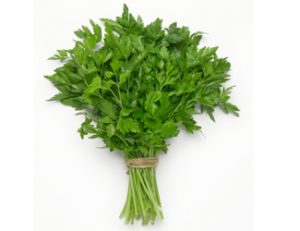 Herb stems get the short shrift when it comes to their use and get thrown out most of the time.
Herb stems get the short shrift when it comes to their use and get thrown out most of the time.
Parley stems (to the left) and Cilantro stems (below) almost always get thrown out. These have a ton of flavour. Wash them and chop them fine and throw them in  wherever you use their leaves as well. In fact, they don’t lose their aroma and flavour as fast as the leaves, So use them early in the cooking and supplement them to wards the end of the cooking process with their respective leaves.
wherever you use their leaves as well. In fact, they don’t lose their aroma and flavour as fast as the leaves, So use them early in the cooking and supplement them to wards the end of the cooking process with their respective leaves.
Chopped Parsley stems work great in soups and stews. I have also puréed them and added them with leaves to make Pommes persillade, which is Pan roasted potatoes with Parsley and Garlic, a classic French Potato preparation. Puréed Parsley stems work great when you want to cut the basil in making a pesto with Parsley; just use a mixture of leaves and stems puréed to add to the Basil in making the Pesto.
Chopped Cilantro stems are a godsend when you are making a curry. I add them early in the cooking process and use them also very heavily when making a curry base. One of the most common bases for Suuth Indian style Green Curry is puréed Cilantro, Garlic, Green Chillies. I add the stem in there on a routine basis.
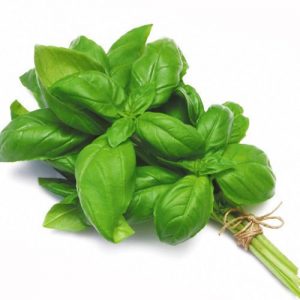
Basil stems, use them in Flavoured oil. Blanche them for twenty seconds in boiling water and immediately plunge them in ice water to stop the cooking. This is just to sterilize the outside of the stems. Dry them completely with paper towels and then put them in a air tight glass bottle with some warm extra virgin Olive oil. Steep them for a ten days to fourteen days and then discard them or purée the oil soaked basil stems and add them to Pesto.
The woodier stems of Rosemary and thyme have less wide ranging uses. However, they 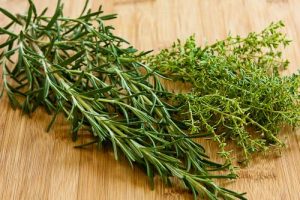 can be added to stews for flavouring. Rosemary needs care since it has piney undertones. However, thyme stems are fine when used in stews. More often than not, I just tie thyme into a bundle with Kitchen twine and use it stems and all and then get them out after the cooking is done.
can be added to stews for flavouring. Rosemary needs care since it has piney undertones. However, thyme stems are fine when used in stews. More often than not, I just tie thyme into a bundle with Kitchen twine and use it stems and all and then get them out after the cooking is done.
So don’t think of them as waste but there are plenty of usefulness in the parts of herbs we are conditioned to throw away. Try using them and you will be surprised.
Don’t throw that out
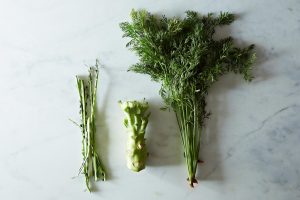 Most of us use vegetables in the kitchen. We have our habits of processing the vegetables, keeping some parts and tossing out others. This post is about two different things; one is that by throwing out some parts we may be losing out on the flavours contained there in, and the other is that it extends the use of the ingredient and actually contributes to frugality. It is the case of use as much of the ingredient as possible, along the lines of eat all parts of the butchered animal ethos. So I am also going to include these posts under the “Frugal Eating” Category.
Most of us use vegetables in the kitchen. We have our habits of processing the vegetables, keeping some parts and tossing out others. This post is about two different things; one is that by throwing out some parts we may be losing out on the flavours contained there in, and the other is that it extends the use of the ingredient and actually contributes to frugality. It is the case of use as much of the ingredient as possible, along the lines of eat all parts of the butchered animal ethos. So I am also going to include these posts under the “Frugal Eating” Category.
One classic example is Broccoli. We cut the florets to steam and all of the stalks get tossed away as debris. At best, they are thrown on the compost heap. The same thing happens with Cauliflower stalks.
This practice is even more prevalent when we look at Herbs. Parsley is a classic example; we use the leaves and the entire pile of stems hits the garbage. The same happens to Cilantro and to Basil.
I will treat each of these ingredients and give them their due in separate posts.
My attitudes to wine are changing
While I have always loved the good wines and have lashed out occasionally to buy 50-80-100-120 $ bottles of wine and really savoured them, my attitudes towards them are changing recently.
When I tasted a 100$ bottle of wine and it tasted great, my reactions and comments on the wine were just about the wine and not so much what I paid for it; it is easy because most 100$ wines taste darn good. It also resulted in me praising the wine maker for his great skills in producing the great wine.
Recently I am looking at things a little differently. The maker of the great wine is starting from a great place; he can afford and starts with the primo, crème de la crème juice from the best vineyards with the best climate for the year etc. So in effect, he starts on mile 14 of a marathon rather than mile zero.
The guy that produces a wonderful wine at 10-20$ a bottle is not starting from the primo juice and yet, he/she produces a great wine given their starting material. My respect for the makers of very good to great wines for 10-20$ is way more now than for the Mondavi winemaker who produces Opus 1 from the best juice of the year for the region and can sell his wine at about a 100$.
May be in my old age my palate has become not so refined anymore, but I don’t think so. It is just that I am looking at the skill levels of the wine makers with a different set of glasses on.

